Table of Contents
The Azerbaijani flag, also known as the flag of Azerbaijan, holds a significant place in the nation’s history and culture. With its vibrant colors and meaningful symbolism, it represents the Azerbaijani identity and heritage. In this article, we will delve into the intriguing aspects of the Azerbaijan flag, its design, its historical background, and the symbolism behind its elements.
The Azerbaijan flag features three horizontal stripes: blue, red, and green. The blue stripe represents Turkic heritage and freedom, the red stands for modernization and progress, and the green symbolizes Islam. In the center of the red stripe, there is a white crescent and an eight-pointed star, with the star symbolizing the eight branches of the Turkic people and the crescent representing the Islamic faith.
Azerbaijan Flag: Colors and Symbolism
- The flag features three horizontal bands of color: blue on the top, red in the middle, and green on the bottom. At the center of the red band, there is a white crescent and an eight-pointed star.
- The blue color symbolizes Turkic heritage and the Azerbaijani people’s Turkic origins.
- The red color represents modernization, progress, and the drive of the Azerbaijani people towards a better future.
- The green color stands for Islam and the religious heritage of the country.
- The crescent and the eight-pointed star are symbols of Islam, with the star often being associated with the eight branches of Turkic people.
- The flag’s design reflects the nation’s aspirations, cultural heritage, and unity among the Azerbaijani people.
Flag of Azerbaijan
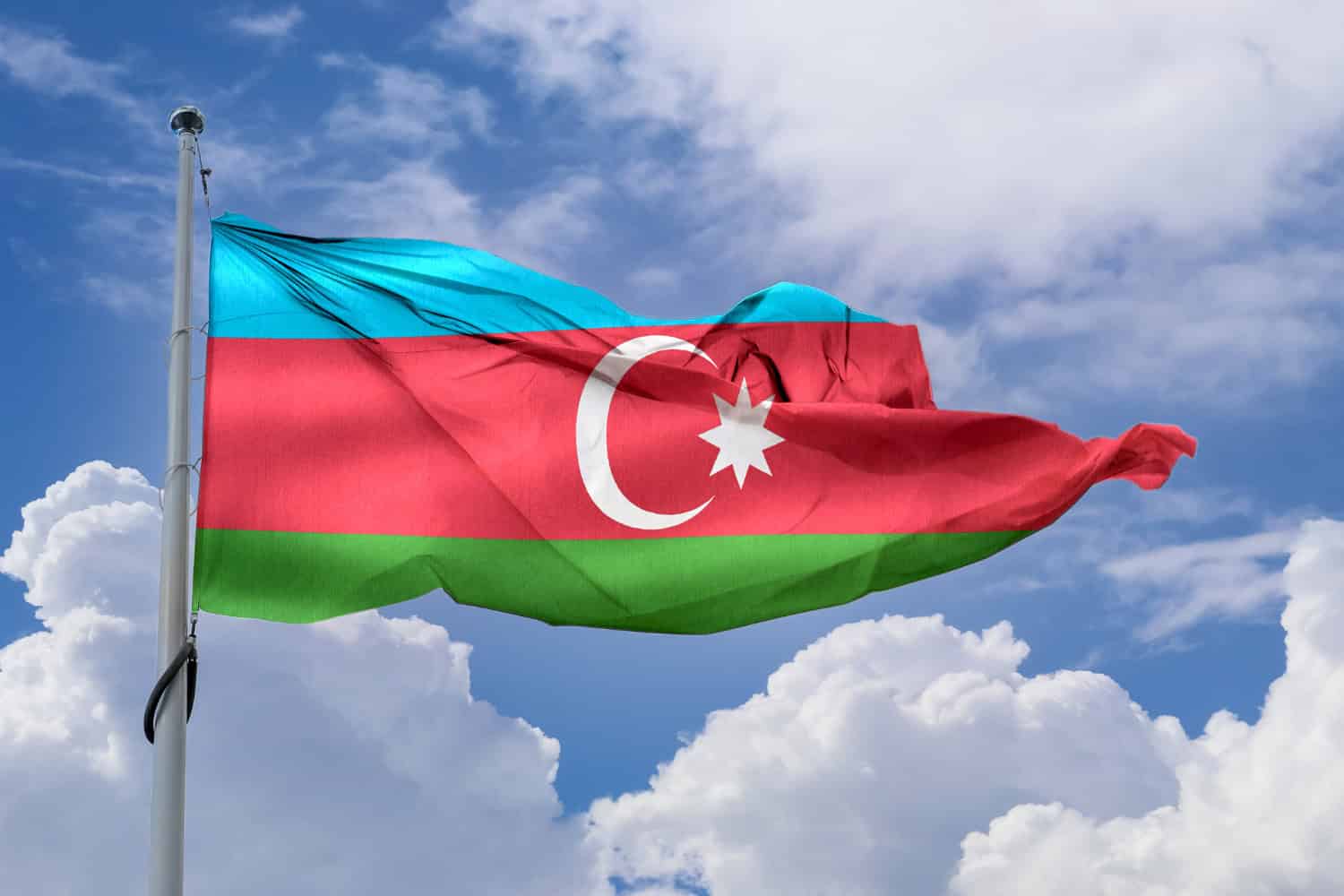
The flag stands as a powerful symbol that encapsulates the cultural significance and spirit of the nation. Its design consists of three horizontal stripes: blue, red, and green, with a white crescent and an eight-pointed star in the middle of the red stripe. The blue color symbolizes Azerbaijan’s Turkic heritage, the red stands for progress and modernization, and the green represents Islam. The crescent is a traditional symbol of Islam, while the eight-pointed star, known as the Rub El Hizb, signifies the eight branches of the Turkic people.
The history of the flag is intertwined with Azerbaijan’s rich heritage and struggle for independence. Adopted on November 9, 1918, the flag represents the unity and aspirations of the Azerbaijani people.
Beyond its aesthetics, the flag from Azerbaijan carries deep symbolic meanings. The colors reflect the values and aspirations of the Azerbaijani people, symbolizing their Turkic heritage, progress, and faith. The crescent and the eight-pointed star hold a profound historical and cultural significance, symbolizing Azerbaijan’s deep roots in Islam and its connection to the Turkic world. It embodies Azerbaijan’s cultural heritage and serves as a reminder of the nation’s resilience and unity.
National Flag Etiquette and Protocol for Azerbaijan
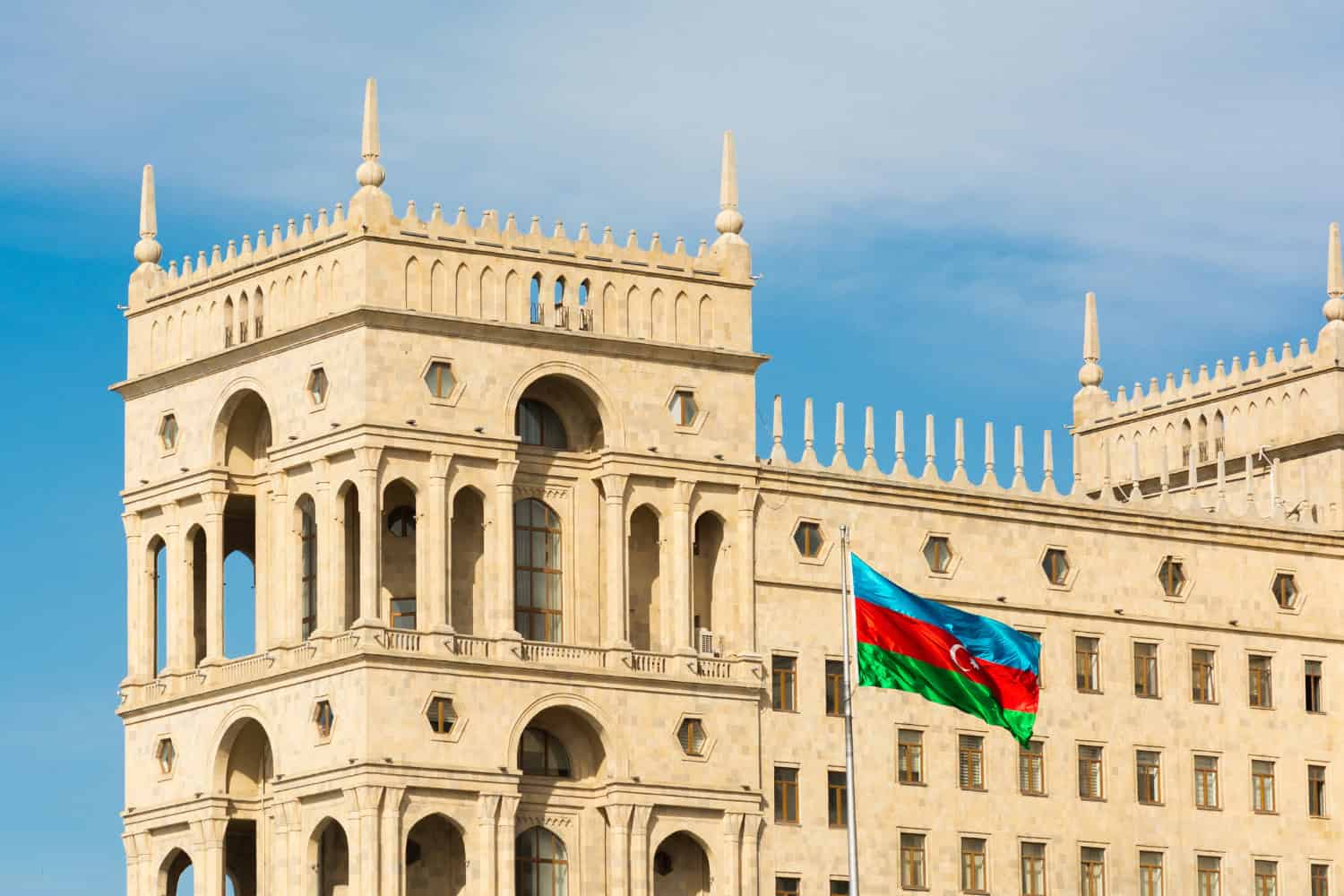
Respecting the proper usage and display of the Azerbaijani flag is of utmost importance. Understanding flag etiquette is essential, especially during national events and ceremonies. Learn about the protocols governing the handling, hoisting, and lowering of the flag. Discover the appropriate procedures for retiring or handling damaged flags, ensuring they are accorded the respect they deserve.
- Proper Handling: The Azerbaijani flag should be handled with care and respect, ensuring it is not allowed to touch the ground or floor. It should be held upright and not dragged.
- Hoisting and Lowering: When hoisting the flag, it should be raised briskly and lowered ceremoniously. It is customary to hoist the flag at sunrise and lower it at sunset, although this may vary depending on the occasion or specific guidelines.
- Displaying the Flag: The Azerbaijani flag should be displayed with the blue field on top, followed by red, and then green. It should be flown freely and not entangled or obstructed.
- Half-Staff: Lowering the flag to half-staff is a gesture of mourning or respect. This should be done on specific days of remembrance or when directed by authorities to honor national tragedies or the passing of significant figures.
- Flag Retirement: When an Azerbaijani flag becomes damaged, torn, or worn out, it should be retired in a dignified manner. This can involve burning it in a respectful and solemn ceremony, following appropriate guidelines and local regulations.
- Flag Size and Placement: The size of the Azerbaijani flag displayed should be proportionate to the size of the flagpole or display area. It is recommended to consult local guidelines or authorities for specific rules regarding flag size and placement.
- Respectful Disposal: If a flag cannot be retired through burning, it should be disposed of in a respectful manner. This can involve burying it or handing it over to authorized organizations that specialize in flag disposal.
Interesting Facts and Trivia
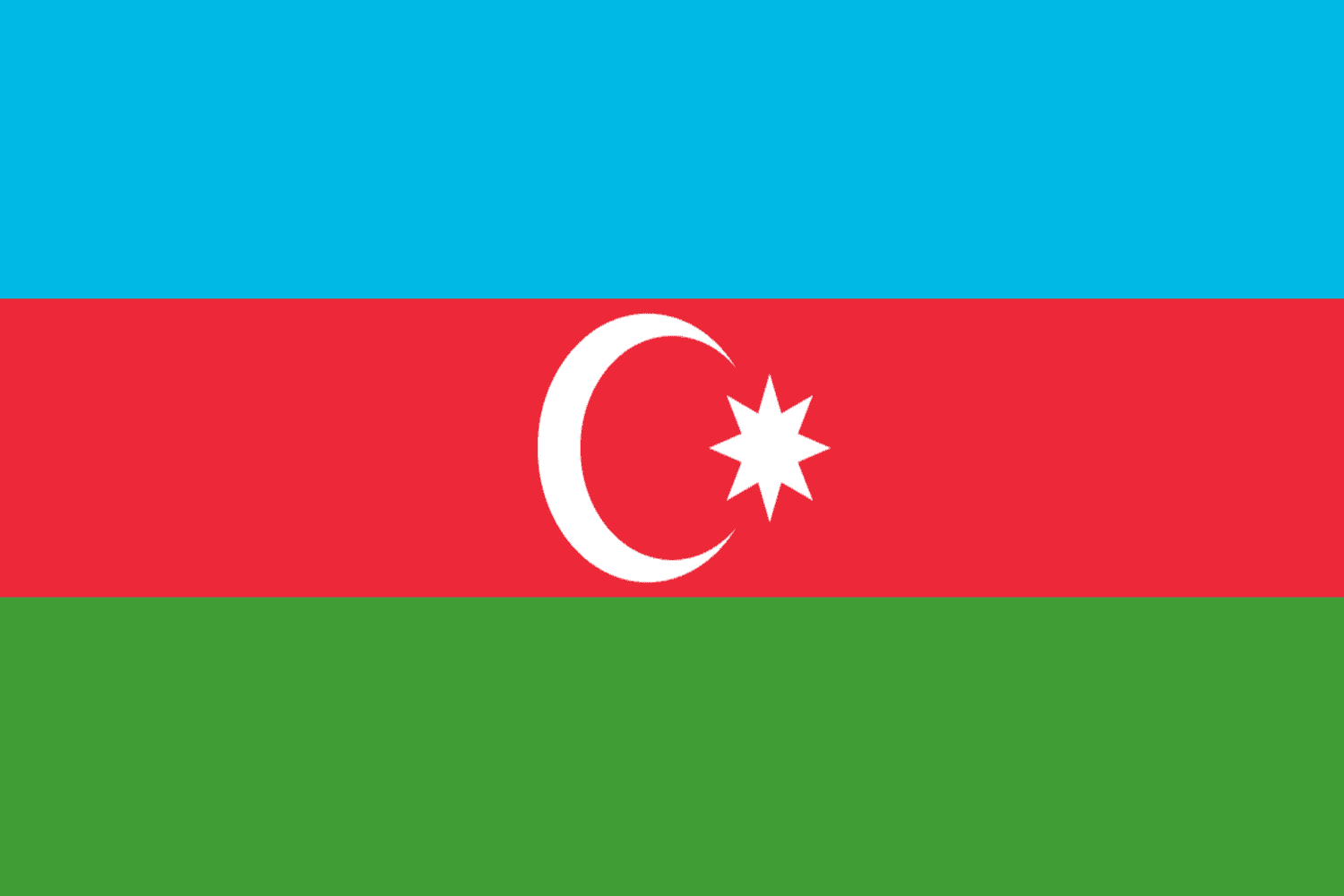
Embark on a journey of fascinating facts and lesser-known trivia about the Azerbaijani flag. Discover unique features within the flag’s design that hold hidden symbolism. Uncover stories of famous incidents or events involving the flag that have left an indelible mark on the nation’s history and identity.
Rich Tapestry of History
- 1918: The current flag of Azerbaijan is adopted on November 9, symbolizing the unity and aspirations of the Azerbaijani people.
- Colors and Symbolism: The blue color symbolizes Turkic heritage, the red represents modernization and progress, and the green stands for Islam.
- Eight-Pointed Star and Crescent: The crescent and star on the flag are symbols of Islam and are traditionally associated with the Turkic peoples, showcasing the deep historical and cultural ties in Azerbaijani tradition.
- National Identity: The flag embodies Azerbaijan’s rich history, cultural heritage, and the nation’s ongoing pursuit of unity, prosperity, and renewal.
These historical facts highlight significant moments in the history of the Azerbaijani flag, showcasing its role in shaping Azerbaijan’s national identity and symbolizing its struggles and aspirations throughout the years.
Flag-Related Symbols and Emblems
A flag is not alone in representing a nation’s identity. Dive into additional national symbols and emblems closely tied to Azerbaijan, understanding their significance and how they relate to the flag. Delve into their historical and cultural roots, further enriching your grasp of Azerbaijan’s heritage. It’s easy to travel and undertake an Azerbaijan tour to explore the country’s top destinations.
Symbolisms of the Azerbaijan Flag
The flag of Azerbaijan contains several symbolic elements that echo the nation’s history, values, and aspirations. Here are the symbolisms of the Azerbaijan flag listed in the itemized form:
- Blue Stripe: Represents Turkic heritage and the Turkic people of Azerbaijan.
- Red Stripe: Symbolizes progress and modernity, showcasing the country’s path to advancement.
- Green Stripe: Depicts Islam and the religious identity of the majority of Azerbaijan’s population.
- Eight-Pointed Star: Known as the Rub El Hizb, it symbolizes the eight branches of the Turkic people and is a prominent motif in Turkic heritage.
- Flaming Sun: Represents the fire and the ancient Zoroastrian beliefs of the country, paying homage to Azerbaijan being the “Land of Fire.”
- Flag’s Design: Mirrors Azerbaijan’s aspirations, cultural heritage, and the unity among the Azerbaijani people.
- National Identity: The flag serves as a powerful emblem uniting the Azerbaijani people, reminding them of their mutual heritage and cultural identity.
- National Aspirations: Through its design and elements, the flag captures the aspirations and values of the Azerbaijani nation, including respect for heritage, progress, and religious identity.
These symbolisms in the flag foster the nation’s sense of identity and pride, showcasing its historical trajectory and cultural importance.
Flags of Similar Countries or Regions in the Caucasus
Examining the flags of neighboring countries or regions around Azerbaijan can provide intriguing insights. Compare and contrast the flags, exploring similarities in design, colors, or symbolism. Uncover historical and cultural connections between flags, shedding light on shared influences or distinctive identities.
Azerbaijan Flag vs Armenian Flag
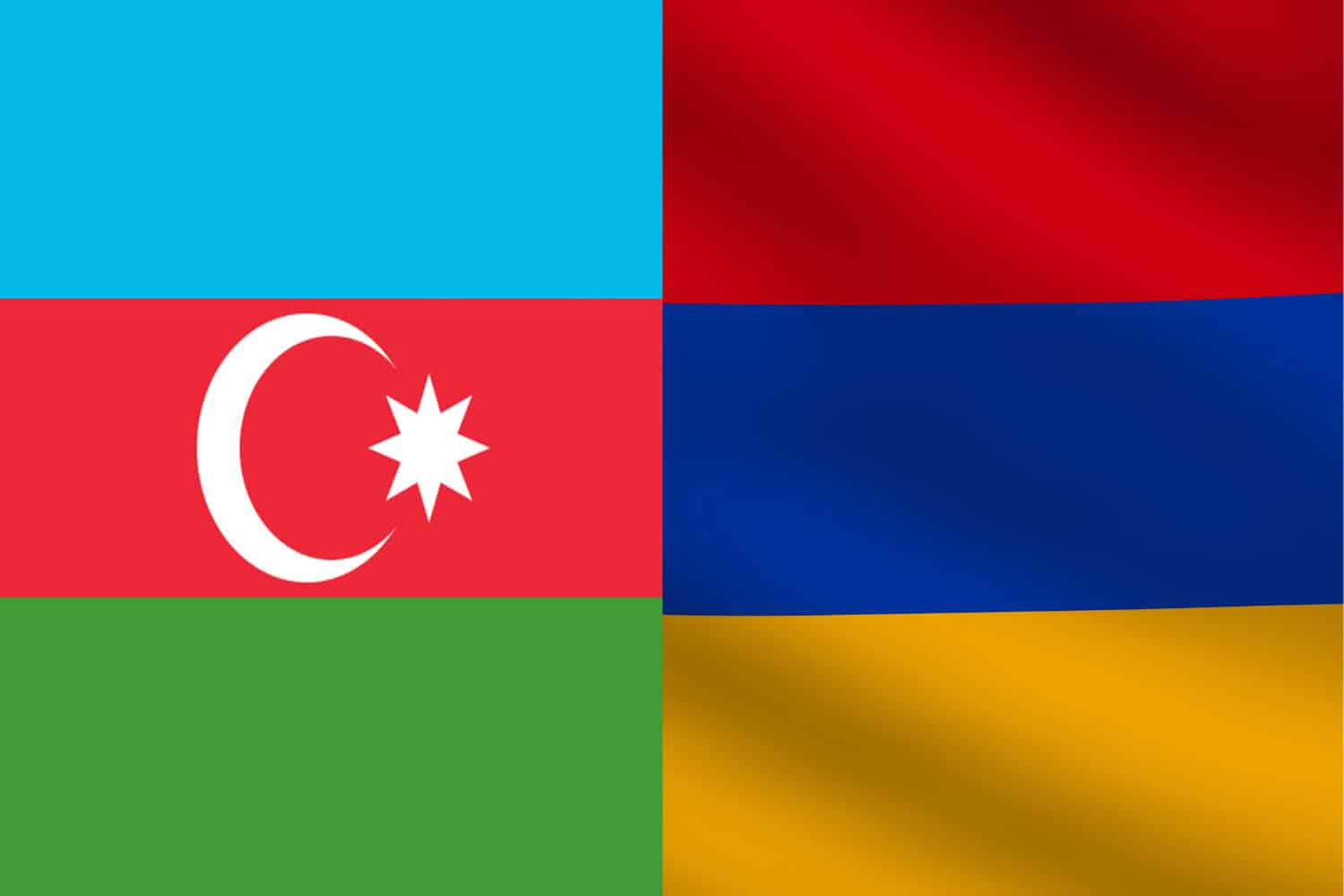
Similarity: Both flags feature horizontal stripes.
Difference: The Armenian flag has red, blue, and orange horizontal stripes, while the Azerbaijani flag has blue, red, and green stripes with a white crescent and an eight-pointed star in the center.
Azerbaijan Flag vs Georgian Flag
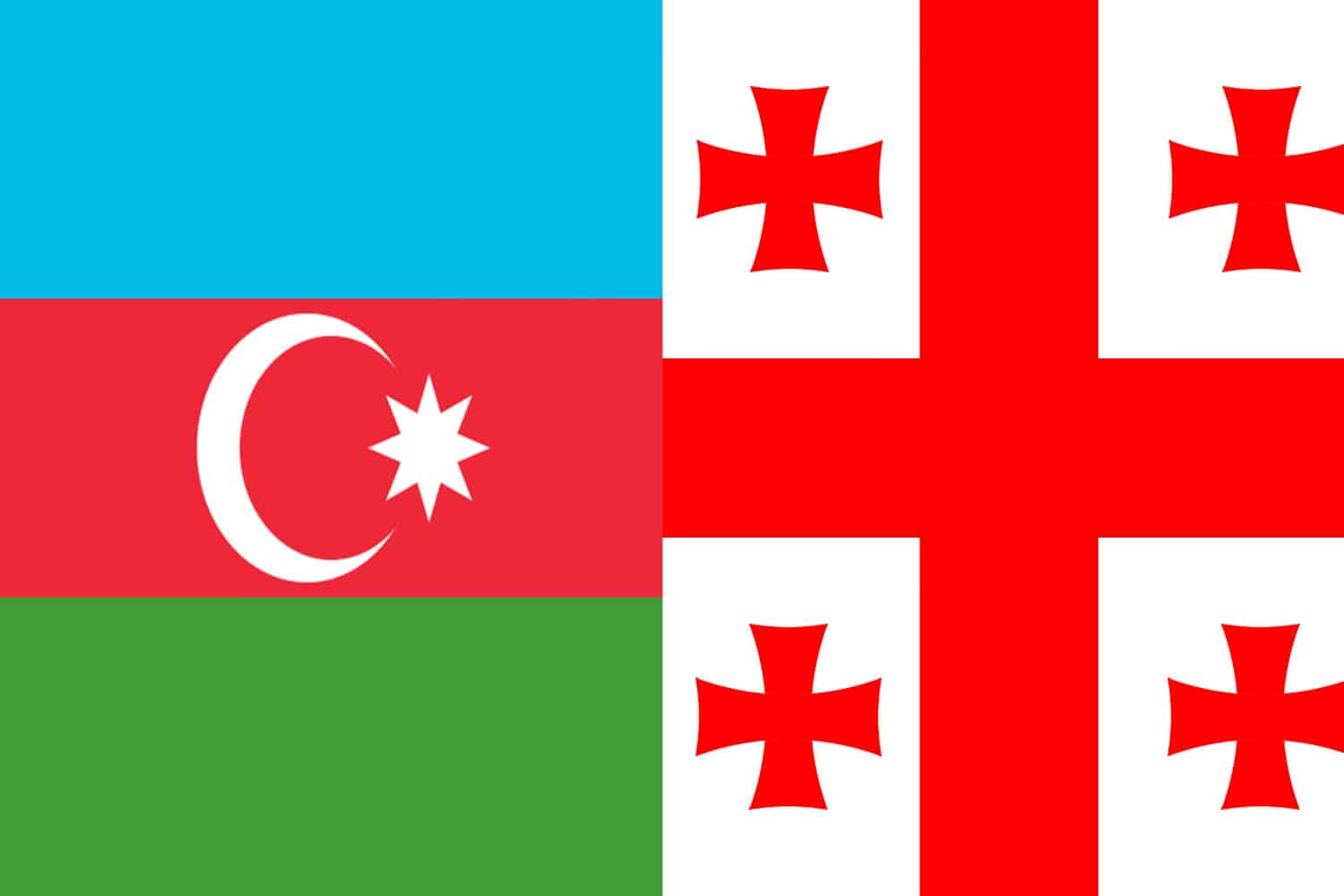
Similarity: Both flags use a combination of red and white.
Difference: The Georgian flag is made of five alternating stripes of red and white with a large red cross in the center and four smaller crosses in each quadrant, whereas the Azerbaijani flag features blue, red, and green stripes with a white crescent and an eight-pointed star in the center.
Azerbaijan Flag vs Russian Flag (specifically for the North Caucasus region)
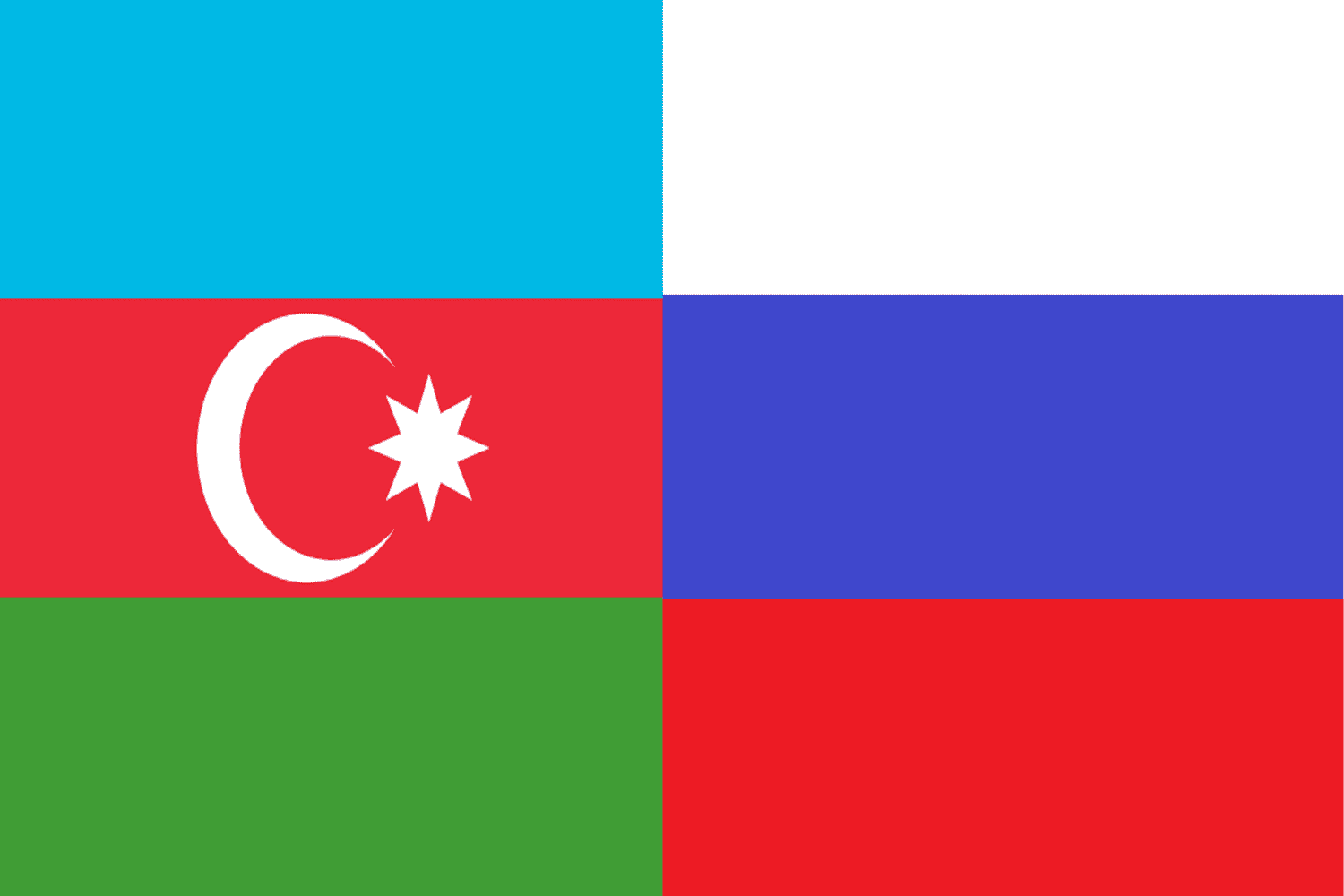
Similarity: Both flags use horizontal stripes.
Difference: The Russian flag has white, blue, and red horizontal stripes, whereas the Azerbaijani flag has blue, red, and green stripes with a white crescent and an eight-pointed star in the center.
Azerbaijan Flag vs Turkish Flag
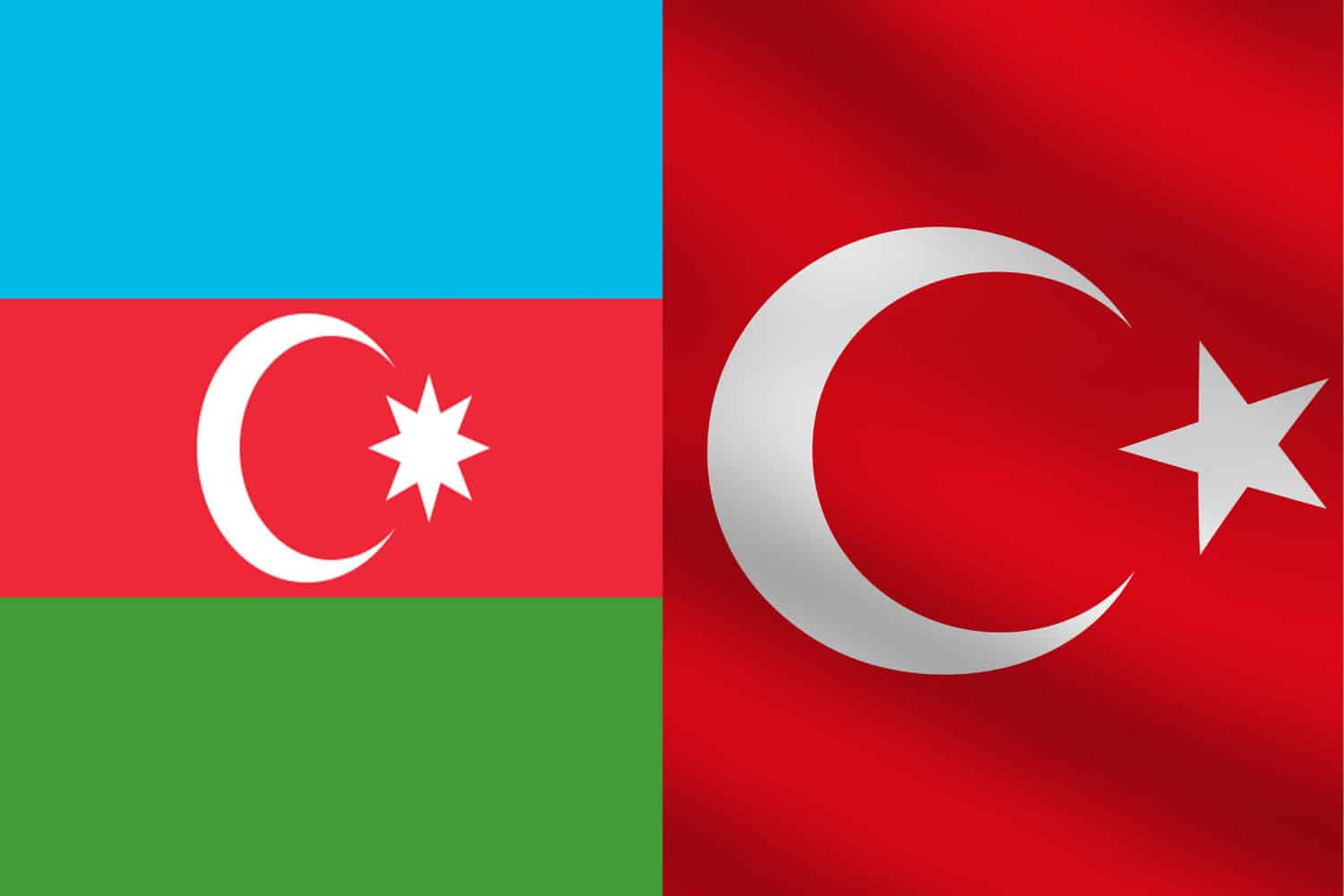
Similarity: Both flags have red as a predominant color and feature crescent and star symbols.
Difference: The Turkish flag is red with a white star and crescent, whereas the Azerbaijani flag has blue, red, and green stripes with a white crescent and an eight-pointed star in the center.
Azerbaijan Flag vs Iranian Flag
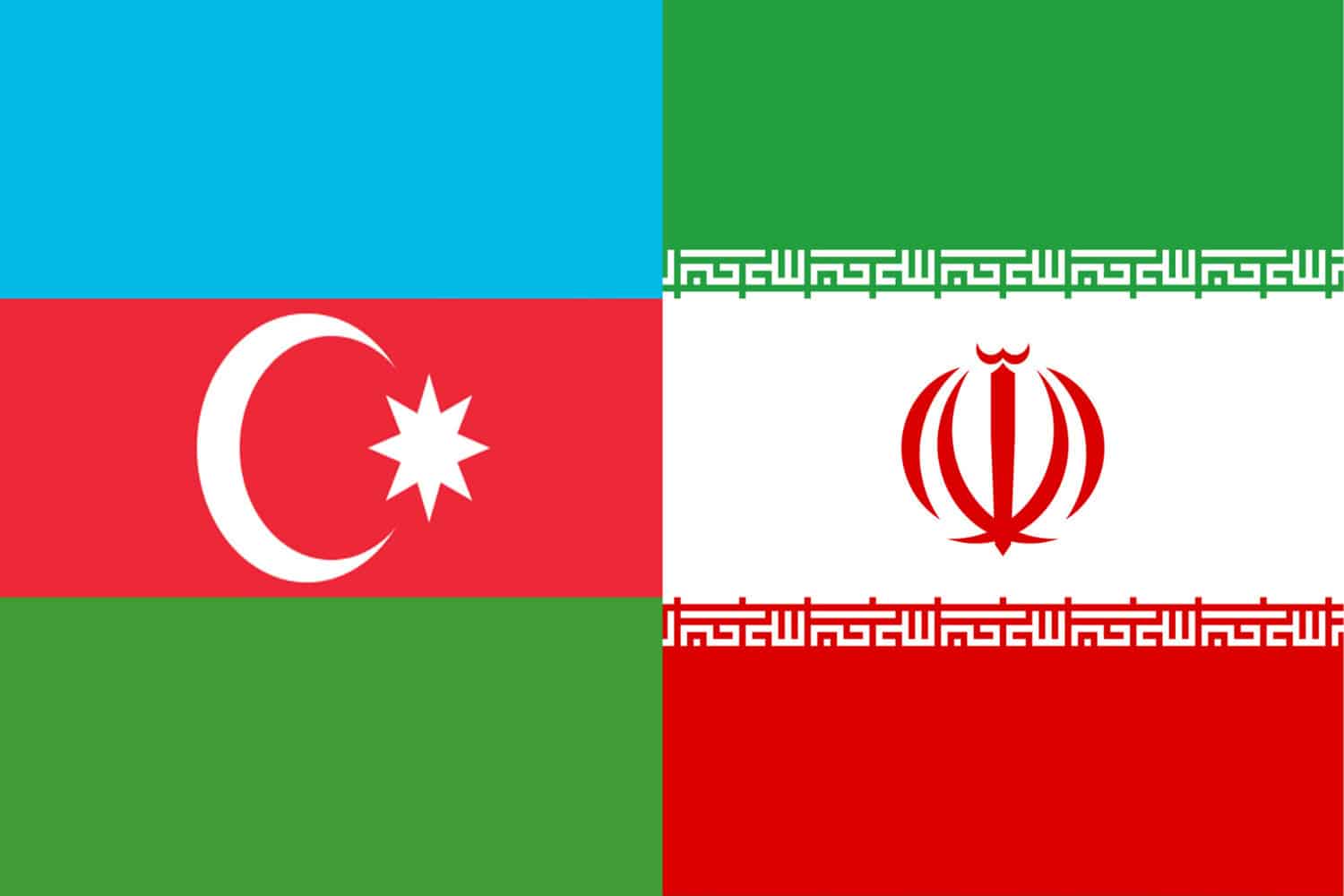
Similarity: Both flags have horizontal stripes and use the color red.
Difference: The Iranian flag features green, white, and red horizontal stripes with stylized versions of the Arabic phrase “Allahu Akbar” (God is Great) on the borders between the stripes and a stylized tulip emblem in the center. The Azerbaijani flag has blue, red, and green stripes with a white crescent and an eight-pointed star in the center.
Azerbaijan Flag vs Turkmenistan Flag
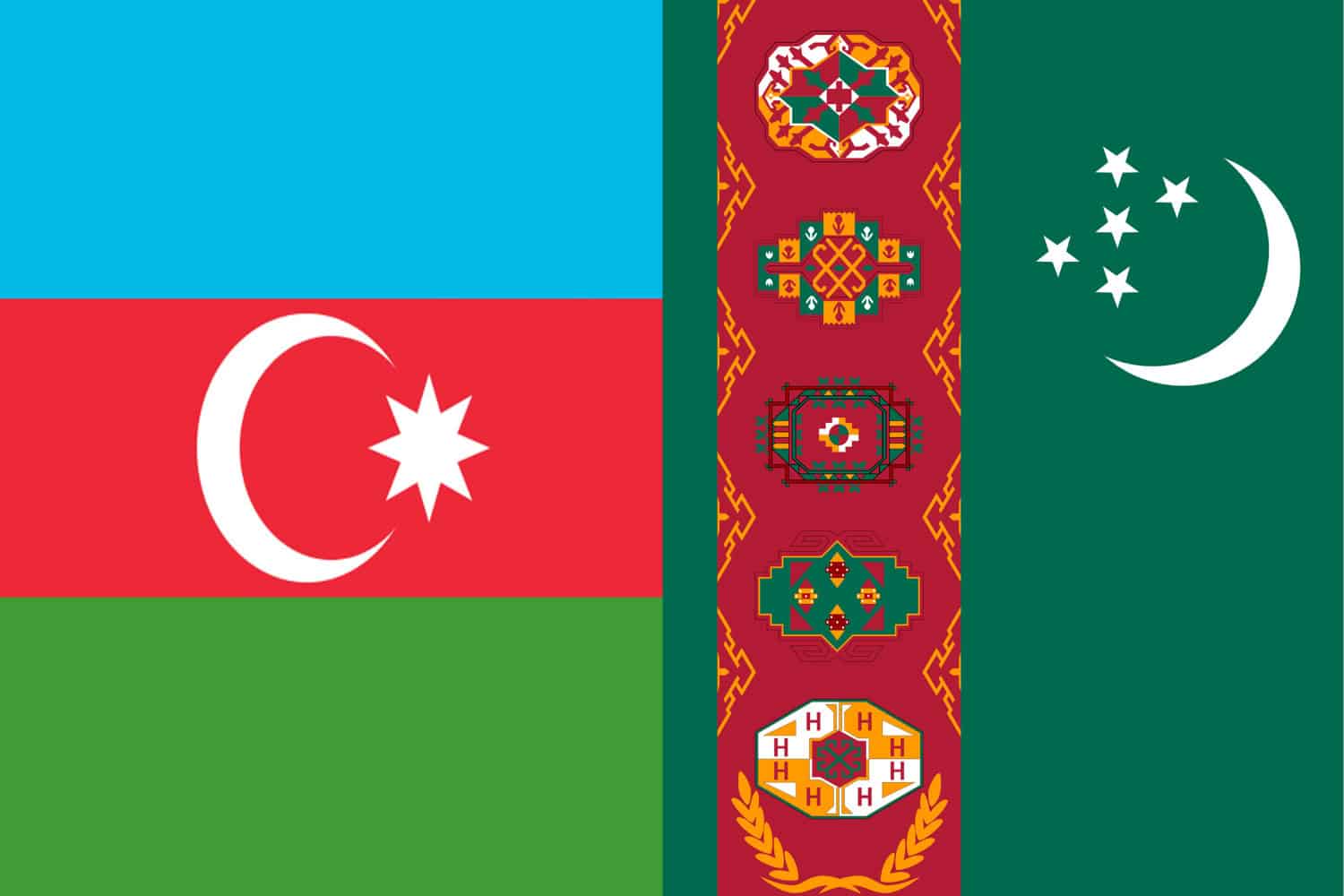
Similarity: Both flags feature a combination of green and red.
Difference: The Turkmenistan flag is predominantly green with a vertical red stripe on the hoist side that contains five carpet guls (designs used in producing carpets) and two olive branches, while the Azerbaijani flag has blue, red, and green horizontal stripes with a white crescent and an eight-pointed star in the center.
Frequently Asked Questions (FAQs)
Discover answers to common questions related to the Azerbaijan flag picture. From its historical origins to the symbolism behind its elements, find concise and informative responses that address inquiries commonly posed by those curious about Azerbaijan’s flag.
What do the colors on the Azerbaijani flag symbolize?
The blue color represents Turkic heritage, the red stands for progress and modernity, and the green symbolizes Islam.
Is there any historical significance behind the Azerbaijani flag’s design?
Yes, the design of the flag is inspired by the ideals of the Democratic Republic of Azerbaijan and represents the nation’s cultural and historical heritage.
What does the eight-pointed star and crescent on the Azerbaijani flag represent?
The crescent and star, which are traditional symbols of Islam, symbolize Azerbaijan’s connection to its Islamic heritage. The eight points of the star represent the eight Turkic peoples of the world.
Are there any religious connotations associated with the Azerbaijani flag?
While the Azerbaijani flag does incorporate symbols tied to Islam, such as the crescent and star, it primarily represents the secular and diverse nature of the country.
How does the Azerbaijani flag reflect the country’s geographical diversity?
The colors on the flag symbolize different aspects of Azerbaijan’s landscape: the blue represents the Caspian Sea, the red stands for the modern cityscapes and development, and the green signifies the lush nature of the land.
Has the design of the Azerbaijani flag changed over time?
The current design of the flag was adopted in 1991 when Azerbaijan regained its independence from the Soviet Union, and it has since remained consistent, signifying stability and continuity.
Is the Azerbaijani flag associated with any specific national holidays or celebrations?
Yes, the Azerbaijani flag is prominently displayed during national holidays such as Republic Day and Independence Day, as well as during cultural festivals and sporting events.
Are there any guidelines for the respectful handling and display of the Azerbaijani flag?
Yes, the flag should be treated with respect, not allowed to touch the ground, and hoisted and lowered with dignity during official ceremonies and events.
Does the Azerbaijani flag have any similarities to other flags in the region?
The crescent and star are symbols that can be found on several flags in the region, reflecting shared cultural and religious ties.
What does the Azerbaijani flag symbolize for the Azerbaijani people?
The flag serves as a symbol of national pride, unity, and the rich history and diverse cultural identity of the Azerbaijani people, evoking a sense of belonging and patriotism.
More About Azerbaijan
[the-post-grid id=”50339″ title=”Azerbaijan Main page”]
